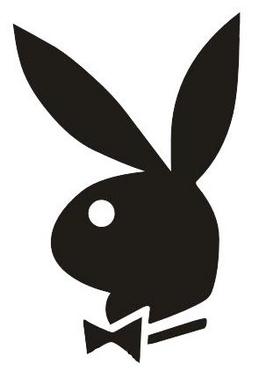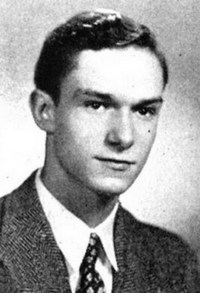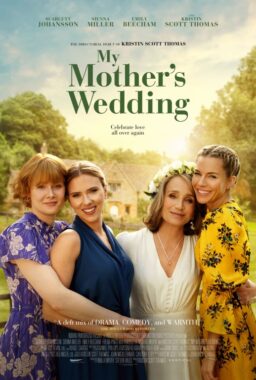 From the moment that Hal Holmes and I slipped quietly into his basement and he showed me his father’s hidden collection of Playboy magazines, the map of my emotional geography shifted toward Chicago. In that magical city lived a man named Hugh Hefner who had Playmates possessing wondrous bits and pieces I had never seen before. I wanted to be invited to his house.
From the moment that Hal Holmes and I slipped quietly into his basement and he showed me his father’s hidden collection of Playboy magazines, the map of my emotional geography shifted toward Chicago. In that magical city lived a man named Hugh Hefner who had Playmates possessing wondrous bits and pieces I had never seen before. I wanted to be invited to his house.
I was trembling on the brim of puberty, and aroused not so much by the rather sedate color “centerfold” of an undressed woman, as by the black and white photos that accompanied them. These showed an ordinary woman (I believe it was Janet Pilgrim) entering an office building in Chicago, and being made up for her “pictorial.” Made up! Two makeup artists were shown applying powders and creams to her flesh. This electrified me. It made Pilgrim a real person. In an interview she spoke of her life and ambitions.
The photographs that burned into my mind did not reveal any of Miss Pilgrim’s wondrous bits. I sensed even then that bits were not what it was about. All depended on context. Miss Pilgrim would disrobe and have her body made up by two other women for her Pictorial, and then…then… turning the page…and then she would put on a dressing gown and enter a photo studio and meet a serious and respectable looking photographer… and then…then…she would drop the gown to the floor and then… I turned the page…she would pose for the Centerfold.

It was the process that entranced me. I’d seen cheesecake pin-ups before; my own basement, across the street from Hal’s, also contained certain hidden magazines we had studied. That our fathers concealed these magazines from our mothers and that we studied them secretly was surely a rite of passage into manhood. The women we found in those other magazines had no existence apart from their pages. They came into the world full-blown as we saw them, wearing polka-dot bikinis or holding Japanese umbrellas, and after the photo was taken they ceased to exist. They didn’t come to work, go home from work, eat, sleep, sneeze, or have any corporeal existence. They were pin-ups. The women in Playboy were real, and lived only 135 miles from Urbana, Illinois, and in some unlikely but thinkable universe I might meet them. My pre-teen hormones cried out: Yes! This is what we’re hormones for!
In the years to come, Hugh Hefner was often in the news, and rarely in a story I didn’t read. He lived in a Mansion. He drove a Mercedes two-seater. He smoked a pipe. In his Mansion, Tony Bennett, Julie London and Bill Cosby hung out, and there were parties every night, and something was happening that was halfway between a bachelor’s pad and a bacchanal.

I promised to myself that if I ever got a job Chicago, I would get myself invited to the Mansion within six months. It didn’t take that long. I was hired by the Sun-Times in the autumn of 1966, and two months later I was assigned to write a feature story about a party at the Mansion. It was a party for the top Chevrolet dealers of America. Julie London was nowhere to be seen. But there was a big buffet, and Hef was in the living room with his dressing gown, his slippers, his pipe, his Pepsi and his date. I slipped into an alcove and found my way down to the Grotto with its plate-glass window opening onto the aquatic underwater vista of the pool.
And there I met, not Miss December, but a young woman named Royal Kennedy. She worked in broadcasting, and was also covering the party. She was amused by the Grotto. We later went out on one or two perfectly respectable dates. She had never met a Playmate. We had that in common. It gradually became clear to me that Bill Cosby might meet Miss December but I never would.

I went back to the Mansion several more times, for parties and movie nights. When Russ Meyer came through Chicago with his new bride Edy Williams, Hef had us over for dinner and gave us the tour. Russ shot some of the first Playmates. I covered the opening of the West Coast Mansion in Holmby Hills, and stood at the bar with Tony Curtis. Later Chaz and I went to some of Hef’s New Years’ Eve parties out there. In Playboy I’d read about parties at Hef’s pad with people like Ray Anthony, Mel Torme and Miss October of 1967. And now it was 1988, and OMG, there they still were! Ray Anthony, Mel Torme and Miss October of 1967! And I went to one of Hef’s “movie nights” at the Mansion, with Hef using notes on a yellow legal pad to introduce “Treasure Island.”
Many of you will find my comments deplorable. You may believe Playboy was the enemy of women. It objectified their bodies. It schooled men to regard them as sex objects. It stood for all that feminists fought to correct. There is some truth to that, but it doesn’t impact upon my experience, and the best I can do here is be truthful.
Nobody taught me to regard women as sex objects. I always did. Most men do. And truth to tell, most women regard men as sex objects. We regard many other aspects of another person, but sex is the elephant in the room. Evolution has hard-wired us that way. When we meet a new person, in some small recess of our minds we evaluate that person as a sex partner. We don’t act on it, we don’t dwell on it, but we do it. You know we do. And this process continues bravely until we are old and feeble.
To protect you from possible trouble at your work,the photograph that was formerly in this space is now linked here.
Yes, Playboy presented women’s bodies for our regard. Yes, they were airbrushed and photo shopped to perfection. Not a blemish, not a zit, not one single chewed fingernail. This process of perfection doesn’t deny nature, it reflects it. When we meditate on the partner of our dreams, the mental image we summon is without flaw. We don’t dwell upon a pimple or a bad tooth or a little underarm fat. We meditate on the gestalt. We meditate on being accepted and loved by that wonderful person. Photographers like Diane Arbus photographed people realistically, and were called cruel.
Nor it is only women’s bodies that have been objectified and turned into sex objects. Men have undergone the same process. If few women feel they can live up to a Playmate, few men believe they belong in a Ralph Lauren or Calvin Klein ad. Vogue doesn’t publish 700-page holiday issues filled with models with zits. I’m not saying this is ideal. I’m saying it’s the truth.

So now I move on to a larger view of Hugh Hefner. Yes, he has possibly experienced more orgasms with more different women than any other man who has ever lived. But his relationships have been consensual, and no woman has ever said, “Why, Mr. Hefner! I had no idea you were that kind of man!” It is also notable that in an age where sexual harassment lawsuits are as common as bankruptcies, Hefner has never been charged with misbehavior. We must conclude that Hefner’s behavior is that of a generous gentleman who likes to get laid. That is not the worst thing in the world.

I’ve just finished watching a new documentary named Hugh Hefner: Playboy, Activist and Rebel, by Brigitte Berman, who won an Oscar for “Artie Shaw: Time is All You’ve Got” (1985), and also directed “Bix: Ain’t None of Them Play Like Him Yet” (1983). My guess is that Hefner and Berman met through their interest in jazz. The film is pro-Hefner, although it supplies Susan Brownmiller and Pat Boone to make the obligatory arguments for the prosecution. It presents Hefner as he would probably want to be seen, as a supporter of civil rights, civil liberties, freedom of speech, and freedom of choice.
His credentials in these areas have cost him some money and trouble. His syndicated TV program “Playboy After Dark,” which he owned and controlled, showcased mixed-race singing groups and blacklisted performers like Pete Seeger at a time when networks enforced a ban on both. It also showed black and whites dancing together on a set supposed to be “Hef’s Penthouse.” Some stations in the south refused to carry it. The show went on the air not long after Nat King Cole’s show left NBC after failing to find advertisers who would buy into a “black” show.
In New Orleans, Hefner franchised one of the first Playboy Clubs, later to learn it was forbidden by law to mix black and white patrons. He bought back the franchise, and reopened it to club members of all races. It was in that club that a black comedian performed before whites for the first time in Louisiana (although black musicians were “legal”). He was a young man from Chicago named Dick Gregory. Gregory appears in the film, recalling that he was a replacement for a white comic, Dr. Irwin Corey, and the Playboy event turned out to be a private party for 300 white businessmen. “Three hours later, I was still talking,” Gregory says. “Everything turned around on that day.” For his career, it certainly did.

It became a old joke that people said they read Playboy because of the articles. But Hefner tried much harder than necessary to maintain a high editorial standard. His issues #2 through #4 serialized Ray Bradbury’s Fahrenheit 451. He championed Vladimir Nabokov, Margaret Atwood, James Baldwin and Jorge Luis Borges. His Playboy Interviews were newsworthy, and his editors must have smiled when they sent Alex Haley to interview the American Nazi George Lincoln Rockwell. (Haley recalls, “I told him I’d been called ‘nigger’ many times, but this time I was being well paid to hear it.”) “The Hurt Locker” was based on Playboy reporting.
Hefner and Playboy have been around so long that not everyone remembers what America used to be like. It was sexually repressed and socially restrictive. College students were expelled for having sex out of wedlock. Homosexuality and miscegenation were illegal. Freedom of choice was denied. McCarthyism still cast a pall over the freedom of speech. Many people joined in the fight against that unhealthy society. Hefner was one of them, and a case can can be made that Playboy had a greater influence on our society in its first half-century than any other magazine.
No doubt Playboy objectified women and all the rest of it. But it also celebrated them, and freed their bodies from the stigma of shame. It calmly explained that women were sexual beings, and experienced orgasms, and that photographs of their bodies were not by definition “dirty pictures.” Not many of today’s feminists (of either gender) would be able to endure America’s attitudes about women in the 1950s.

As Hefner speaks, you realize that he believes in civil rights and liberties so deeply that it’s instinctive. Many people shared his politics in the 1950s and early 1960s, but not many of them ran corporations that (a) depended on mass audiences, and (b) stood to lose business because of political beliefs. When it came to African-Americans in his clubs or on his TV show (or as his centerfolds), Hefner did the right thing without calculation, and paid a financial penalty. When the (endless) Playboy Philosophy argued for change, it is unlikely he gained a single reader. But he outlined and defended a progressive philosophy. And when magazine interviews were often revolting puffery about celebrities, he went long and in detail with people like Malcolm X, Bertrand Russell, Ayn Rand, Jean-Paul Sartre, Elisabeth Kubler-Ross and Marshall McLuhan. The fact is that sex made money for Hefner, and he used it to produce one of the best magazines in America.
He also spent money to free a man who faced a 50-year prison term for…fellatio. And helped overturn laws that made fellatio and cunnilingus a crime in all 50 states (for which many of us must be grateful). He fought against laws punishing homosexuality and interracial marriage. He supported Lenny Bruce’s fight against an obscenity arrest in Chicago. He fought obscenity prosecutions brought by such as Charles Keating, founder of the Citizens for Decent Literature. He won. Berman’s doc cannot resist juxtaposing shots of Keating lecturing on morality and Keating in handcuffs being led to prison for bank fraud. Hefner’s Playboy Foundation fought for civil liberties in general. The cost for these activities came out of his profits, and that didn’t give him a moment’s pause.

Some argue, like Brownmiller, that Playboy was bad for women–that it made them objects for masturbation. I would suggest Playboy was several thousand years behind the curve in doing so. And not only women are used as subjects for meditation during masturbation. Masturbation is an equal opportunity employer. Others argue, like Boone, that Playboy promoted immoral behavior. I believe sex in our society, in general, is more moral today than it was when Playboy began. I think young people in particular have healthier attitudes toward it than they did when I was in high school. I agree that teen pregnancy and STD are tragic, but it was Hefner who fought for birth control and protection when they were illegal in some states. I was taught that a woman’s body was a possible Occasion for Sin. What kind of morality is that?
Hefner is returning to Chicago this week with his brother Keith, to revisit their childhood home and their old high school, Steinmetz. I went along with them on their previous return home in 1994. I’d love for him to see the Audience Award winner in this year’s Chicago Film Festival, “Louder Than a Bomb.” It’s a documentary about the city-wide High School Poetry Slam Contest, co-directed by Jon Siskel, nephew of Hef’s old poker buddy Gene. In its first year of competition, Steinmetz, an unsung school in a mixed neighborhood, came out of nowhere and won the event with a gifted group of poet-performers. In the film, it’s one of the finalists again. The students of Steinmetz may not much care that Hugh Hefner graduated from their school, but without the social changes he fought for and helped to influence, all of the members of their Poetry Slam team might be in jail today along with the ghost of Lenny Bruce. In 1992, Hef revists his childhood home.
Hef throws a house warming in 1972 at the Playboy Mansion West.











